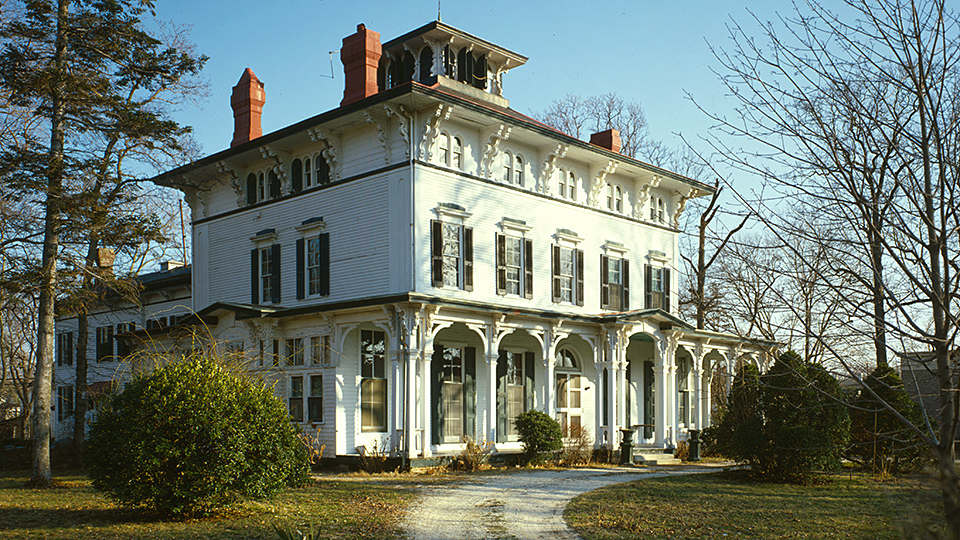Victorian Era Architecture
1837‑1901

George Allen House, 720 Washington Street, Cape May, NJ. Samuel Sloan designed this frame, central hall plan, Italianate villa, and it was constructed in 1863. Jacl E. Boucher, photographer, Historic American Building Survery, NJ-845, date unknown.
More Architectural House Styles
Queen Victoria (1819-1901) ruled the British throne from 1837-1901.
The term “Victorian” [†] refers to the historic period during the late 19th and early 20th centuries. A range of architectural styles emerged during the Victorian Era, made possible by the industrialization of building materials (i.e. light weight wood framing, wire nails, and mass- produced doors, windows, and decorative detailing), which were then shipped by railroad across the country. Victorian-Era architecture was influenced by Medieval English and classical precedents and included styles such as Second Empire, Richardsonian Romanesque, Stick, and Queen Anne. Early, elaborate examples were typically designed by professionally trained architects and builders and are referred to as “high style”. As these new architectural types gained popularity, more modest examples emerged in cities across the country, including in Anaheim. They were simpler in form than their earlier Victorian-Era counterparts and were constructed by local builders and/or homeowners. These more modest, vernacular buildings are sometimes referred to as Transitional because they usually combined a few decorative details from earlier “high style” examples, particularly from the Stick and Queen Anne styles, with elements of the future Arts and Crafts Movement, which proliferated in the following decades. Victorian-Era architecture remained popular until the rise of the Arts and Crafts Movement and widespread use of Craftsman architecture in the early 1900s.
† City of Amaheim, California, Planning & Building Department, Architectural Style Guide: Victorian-Era Architecture, 2020, www.anaheim.net, accessed June, 2021.
>